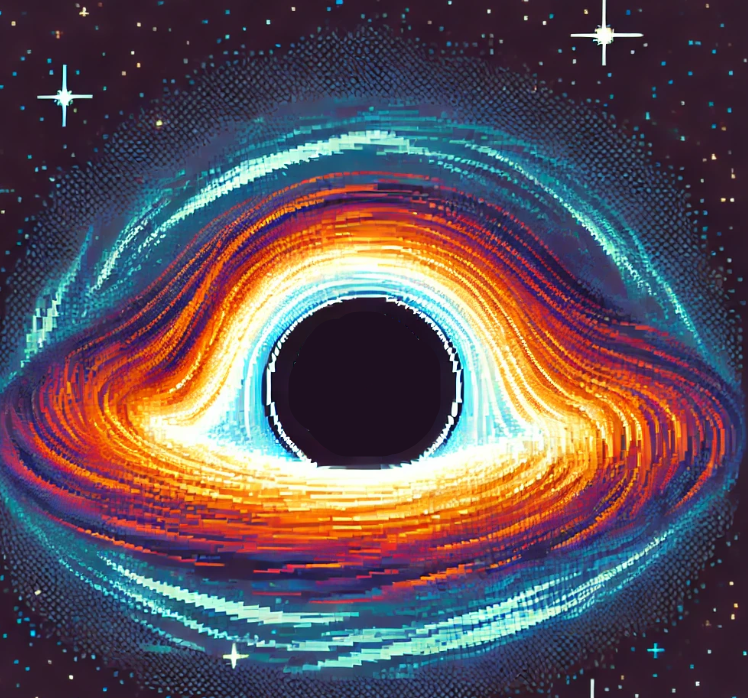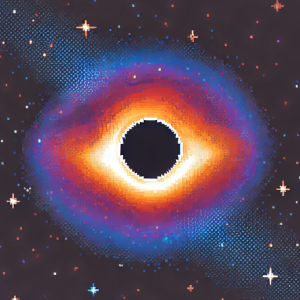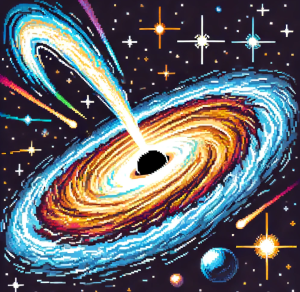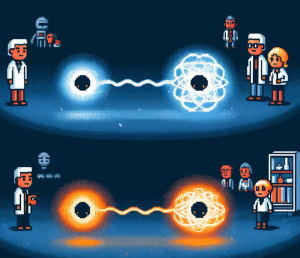
Why Ancient Galaxies Are Glowing Too Much
In the beginning—really, the beginning—galaxies were supposed to be shy. Small. Dim. Kind of like toddlers at their first school dance. But then the James Webb Space Telescope (JWST) crashed the party with a surprise: those early galaxies? They were not just glowing—they were blazing. Some were ten times brighter than our best predictions said they should be.
Astrophysicists scrambled. Were we wrong about how stars are born? Was the whole standard model of the universe off? Did we somehow miss a key piece of the cosmic puzzle?
Turns out, the answer might lie in a place where even the rules of physics start to unravel: the edge of a black hole.
The Cosmic Glare That Shouldn’t Be There
The JWST was designed to see back in time—to catch the faint infrared whispers of galaxies forming just a few hundred million years after the Big Bang. And what it saw was… weird. Dozens of galaxies that were too massive, too formed, and way too bright to make sense. It was like discovering fully-grown adults at a kindergarten graduation.
The old ideas didn’t cut it. Maybe ancient stars were bigger and hotter? Maybe galaxies formed faster? Or maybe early stars exploded in fireworks displays that lit up everything around them?
But each of those explanations came with a catch: they needed unlikely assumptions, and often contradicted other observations. Some even required rewriting how stars work. That’s a pretty big leap.
So one physicist offered a daring alternative: what if those bright galaxies weren’t cheating with stars… but with black holes?
A Light in the Darkness
Janusz Jacak, a theoretical physicist in Poland, proposed a fascinating twist. What if, nestled inside those baby galaxies, were black holes doing something extraordinary? Not just swallowing matter—but lighting up the cosmos in a way we hadn’t considered.
Here’s the wild part: Jacak suggests that near the edge of a black hole—at a point called the photon sphere—something quantum-mechanical happens that makes even hard-nosed physicists raise their eyebrows. The Pauli exclusion principle, a rule that normally says, “No two particles can occupy the same state,” suddenly… doesn’t apply. At least not in that exact spot.
And when that happens? All the energy locked up inside tightly packed electrons and protons—billions upon billions of them—gets released. Boom. Radiation bursts forth like a galactic light show, enough to mimic starlight. Enough to make galaxies look ten times brighter.
That extra glow isn’t coming from stars. It’s coming from hydrogen gas getting excited by this unexpected radiation. In other words: those galaxies weren’t overachieving—they just had a secret source of light.
Black Holes: The Universe’s Ultimate Flashlights?
Let’s be clear: black holes don’t usually help us see things. They’re famous for pulling in light and letting nothing escape. But Jacak’s model says that just before stuff crosses the point of no return, a unique kind of radiation is released—pure quantum weirdness at play.
This isn’t science fiction. The energy involved is real, and the mechanism is based on what we know about quantum particles under extreme pressure. In a way, it’s like opening a cosmic pressure cooker. All that built-up energy comes flying out.
And because the early universe was filled with hydrogen gas, that radiation had plenty of fuel to light up. The result? A bright, shiny galaxy that fools our telescopes into thinking it’s packed with more stars than it really is.
Rethinking What We Thought We Knew
Here’s what makes this discovery so cool: it doesn’t toss out the old models. It doesn’t rewrite the laws of physics. Instead, it adds a new layer—a previously overlooked source of light that fits right into what JWST is seeing.
It also might help explain why some galaxies seem to host supermassive black holes way earlier than expected. Maybe those galaxies didn’t need to be bigger—they just needed a different kind of beacon inside them.
Science often moves forward not with answers, but with better questions. And this one—“What if the brightness isn’t coming from stars at all?”—just might be one of the best.
Let’s Explore Together
Ready to geek out with us? Here are a few questions to get your curiosity flowing:
- What would it mean if black holes actually helped us see more of the universe?
- Do you think there’s still something even weirder out there explaining these bright galaxies?
- What’s the coolest space fact you’ve learned lately?
Join the conversation—share this post, drop your thoughts in the comments, and let’s keep asking big questions about our even bigger universe.
Stay Updated or Risk Falling Behind
Science is evolving rapidly—and in today’s chaotic information landscape, falling behind means losing ground to misinformation. This Week in Science delivers the most essential discoveries, controversies, and breakthroughs directly to your inbox every week—for free.
Designed for educators and science-savvy citizens, it’s your shield against bad data and outdated thinking.
Act now—subscribe today and stay ahead of the curve.
🔗 Liked this blog? Share it! Your referrals help defend truth and spread scientific insight when it matters most.



